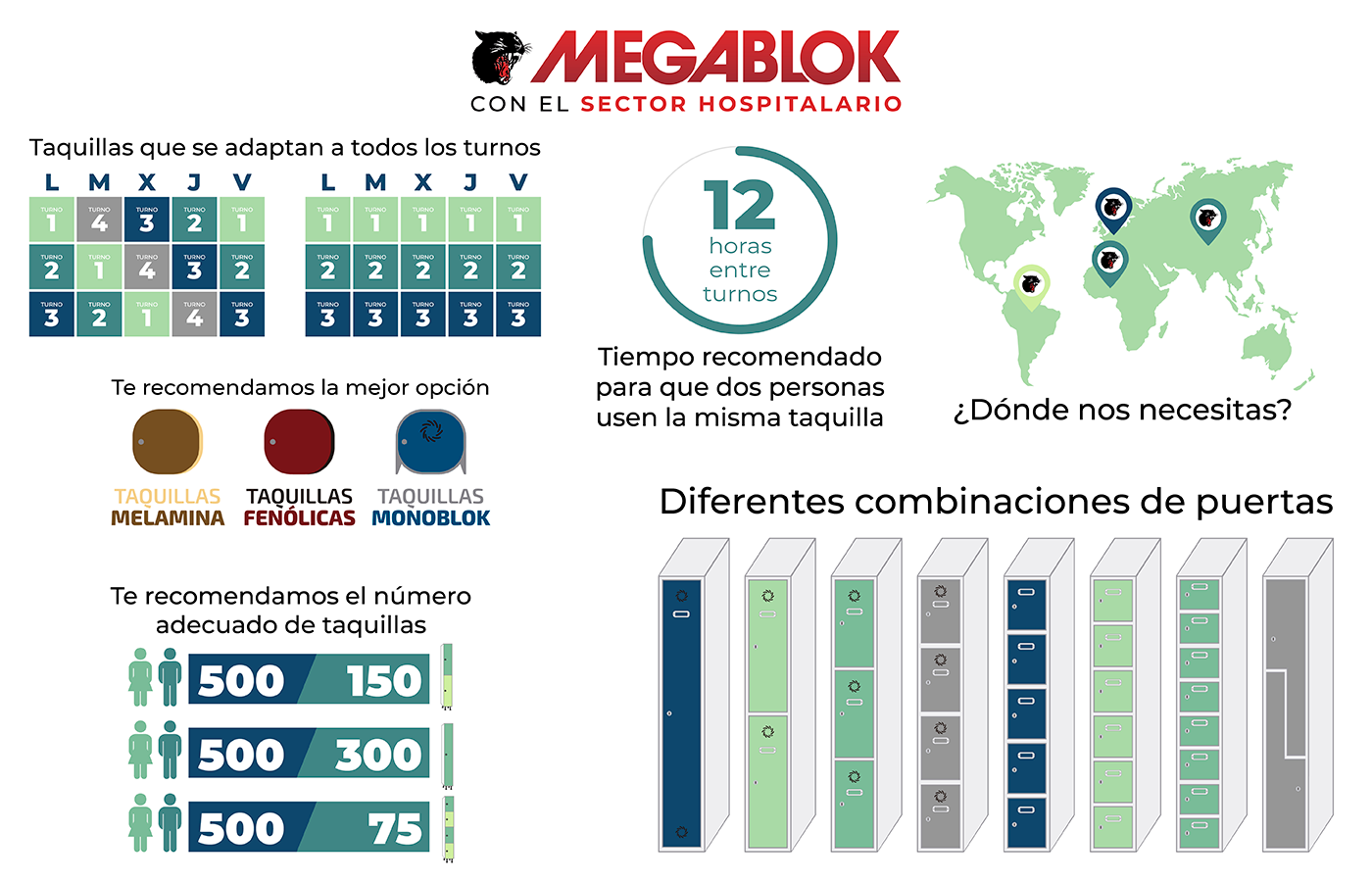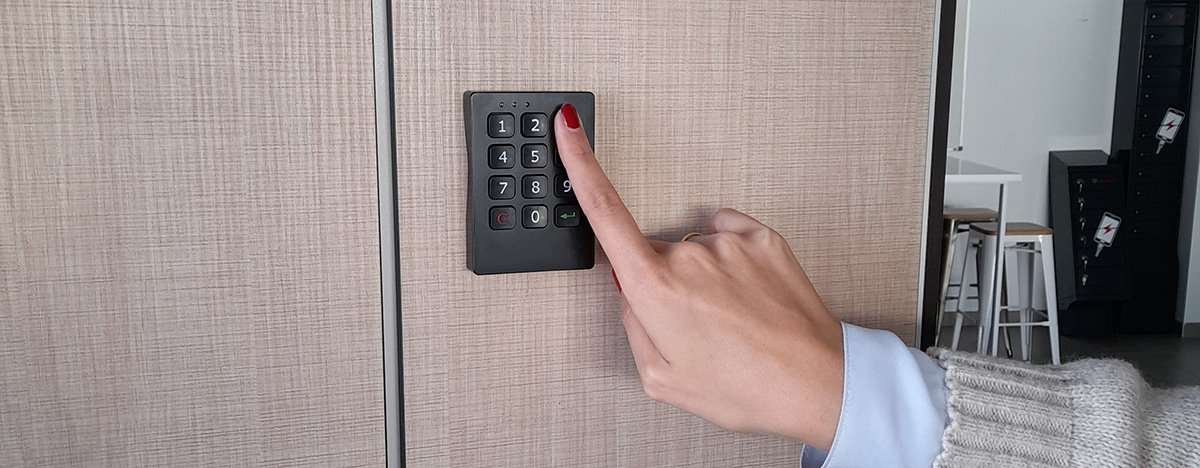Today we are going talk about some issues and doubts that arise when starting to work rotating shifts to which healthcare professionals are exposed in our hospitals and health centres.
What are rotating shifts and why do health professionals work with them?
Rotational shifts are a form of work organised in working days in which certain start and finish times are established with a variable particularity throughout the days or weeks.
This characteristic of time variability means that managers or clerical workers, must, in advance, inform to the employees the possible shift changes. This rotating shifts appears from the need of the health system to have a staff of health working the 24 hours of day, 365 days a year.
Pros and cons of rotating shifts
Pros of rotating shifts
Aunque para muchos pueda parecer imposible, los turnos rotativos tienen algunas ventajas para los trabajadores sanitarios que muchas veces pasan desapercibidas.
- Doctors and nurses are not excessively affected by always having the same "bad" schedule. Hospitals and health centres must offer 24-hour service 365 days a year.
- They avoid fatigue or exhaustion from repetitive repetition of the same activity.
- They allow health workers to have long days off (usually 3), which many find rewarding.
- The workload is equitable because rotations allow for equal sharing of tasks between colleagues.
Cons of rotating shifts
Well, as all that glitter is not gold, now we are going to tell you the other side of the coin: the disadvantages or drawbacks of rotating shifts for healthcare workers.
- Exhaustion, productivity decline and absenteeism for tiredness.
- Possible occurrence of sleep disorders, as: cardiac rhythm disturbances, insomnia, somnambulism, etc.
- Emotional disturbance or anxiety related disorders.
- An increased number of non-forced errors in job. Inclusive. And even the appearing of more accidents at work because of the lack of disconnection.
- Problems with the balance between family and labour life.
Importance of the changing rooms in health sector
Day by day, the healthcare workers run the risk to numerous challenge that its profession have. For that, an appropriate clothing that provides them the correct protection and avoids of a possible contamination, it’s a basic requirement for their work.
The healthcare changing rooms, with an appropriate clothing, is a basic requirement in every hospital and health centre. In addition to this, the uniforms and all the sanitary material (including the changing rooms) must be frequently disinfected, to avoid the spread of dangerous agents.
What tells the regulations about health centres changing rooms?
In Europe, all the workspaces are regulated by a specific’s regulations. We, as rooms furniture manufacturers, are familiar with them, but sure that you are missing some points. According to the Council Directive 89/654/EEC of 30 November 1989, that establish the minimum safety and health requirements for the workplace:
- Appropriate changing rooms must be provided for workers if they must wear special work clothes and where, for reasons of health or propriety, they cannot be expected to change in another room.
Changing rooms must be easily accessible, be of sufficient capacity and be provided with seating.
- Changing rooms must be sufficiently large and have facilities to enable each worker to lock away his clothes during working hours.
If circumstances so require (e.g., dangerous substances, humidity, dirt), lockers for work clothes must be separate from those for ordinary clothes.
- Provision must be made for separate changing rooms or separate use of changing rooms for men and women.
- If changing rooms are not required under 18.1.1, each worker must be provided with a place to store his clothes.

How to equip small changing rooms for a large work team?
On many occasions, we receive some enquiries from health sector companies in relation about how to organize their changing rooms for the team of nurses and doctors on rotating shift. And all of this starts because they don’t have enough space for install one locker for each worker.
At MEGABLOK, we take care of look for the best solutions to the companies or organizations changing rooms. In this case we are going to explain you the best way to make the space of your hospital changing rooms profitable.
Let's suppose that the hospital centre has 500 staff workers, including doctors, nurses, administrative staff, nursing assistants and cleaning staff. All of them, by law, need a personal locker during their work shift. But do we have to install 500 lockers? We say NO, and we explain why.
It all depends on the number of shifts you have at your medical centre. Normally, the shifts of these healthcare workers are divided into 3 or 4 shifts. We explain how the rotating locker system would work in both cases:
- Lockers for 4 rotating shifts
In this case, as you can see in the image, the lockers would be exchanged leaving a shift in between, to avoid overlapping schedules. In other words, the first shift of the day would swap locker with the third, and the second shift with the fourth.
- Lockers for 3 rotating shifts
The system is the same. But, instead of count three shifts, you’ll calculate twice to manage the locker correctly. In this way, the lockers rotation would be: shift 1 with shift 3 and shift 2 with shift 1 of the following day.
In both cases, you would achieve a 50% reduction in the number of needed. So, instead of having 500 lockers in different changing rooms, it will only be necessary install 250-300 spaces for the storage of personal equipment.
Our recommendation, in these cases, is that the customer has an extra number of lockers for the possibility of one worker leaves the locker occupied, there is a staff incensement or, as happened during de pandemic, there is an extraordinary increase in health staff.
Locking system for rotating shift lockers
We know that share the locker of the hospital, or health centre, where you work can be annoying (being aware of the keys, sharing a common password…). But, as for everything in this life, don’t worry because there is a solution, and we give it to you.

When we talk about the use of the shared lockers, between differents health staff, as manufacturers we recommend the use of electronic combination lock. These electronic locks allow doctors and nurses to set a private password at the start of the day and when they finish using it, it resets and makes it available for the next worker to create their own password.
This lock operates with an alphanumeric keypad interface. For use, the users enter a personal 4-digit code. Programming and access to the locker is achieved through the combined use of the lock's keypad.

Smart lockers are the future of the sector. Now, you probably know them for their click and collect system, which allows you to collect your purchases easily and simply, but the reality is that these lockers can go much further.
In the case of changing room lockers for healthcare facilities, our main recommendation goes hand in hand with smart lockers, or Community Locker. But how would this work? What are the benefits?
With the installation of smart lockers in the changing rooms of your hospital or health centre, you will always have control and management capacity of the lockers. In addition, the health staff will only have to select their name (as a user previously registered in the system), the locker they want among those available and it will open automatically. The system will send an opening code to the email for later opening.
With this shared locker system, you will not only have all the management in the palm of your hand (or on your mobile phone), also you will be saving time and money, by not having to change the batteries in the electronic locks. And your environmental impact will be reduced by not having to change batteries at least once a year, because we remind you that one alkaline battery can contaminate 167,000 liters of water.
Materials and form for lockers in hospitals and health centres
OK, now that we know what the best way is to make the most of the space destined for your changing rooms and how to save on their construction and installation, is time to talk about the ideal shape and materials for lockers in health centres and hospitals.
The regulations on changing rooms in companies, which are set out in the Council Directive 89/654/EEC of 30 November 1989, do not specify the construction material that lockers in health centres must have. However, as we are manufacturers, we can give you the best options:
- Metal lockers: if your chaging rooms do not have showers and are kept and dry, this material can be a good option. Its main features include its high resistance and bacterial Paint, which makes it perfect for sanitary spaces. In addition, these lockers are the most economical option on the market.
- Metal lockers with HPL-doors: we named these lockers Monoblok PLUS. This model has a thicker enclosure. The locker is made of metal, which makes it harder and more resistant. In addition, the phenolic door has waterproof, fireproof and antibacterial properties. A locker for all budgets, which is aesthetic and perfect for hospitals and medical centres.
- Melamine lockers: melamine is a material that provides ideal aesthetic characteristics for those healthcare centres that are looking for a certain image. In addition, our melamine lockers have waterproof properties, which gives them the capacity to be in spaces with some humidity.
- Melamine lockers with HPL-doors: these lockers, in addition to the aesthetic characteristics, have HPL-doors, which make them very resistant to damp spaces, such as changing rooms with showers. Moreover, they are also characterised by being fireproof and antibacterial.
Once we have selected the material, it is time to choose the shape that you want your locker to have.
For changing rooms where workers need to store personal belongings and clothing, such as toilets, we recommend 3 types of locker arrangement.
- Single-door lockers: with these lockers, staff will have the full height of the locker (excluding legs or plinth) to store their equipment.
- Lockers with two doors: these lockers have half the available space of the previous ones. However, this allows you to fit twice as many staff in the same space.
- Lockers with L-shaped doors: the shape of these lockers can be the perfect fit for your healthcare locker room. Their L-shape is perfect for medical professionals to hang their gowns and store their slippers. These lockers are only available in metal lockers, Monoblock lockers with phenolic doors, melamine lockers with phenolic doors and those made entirely of phenolic.
The correct optimisation of the spaces in your changing rooms will allow you to have additional m2 in your hospital or health centre and to be able to use them for other purposes such as waiting rooms, rooms or rest areas. So don't hesitate and contact experienced manufacturers. Or better yet, contact us.
